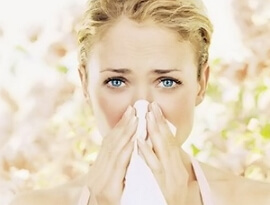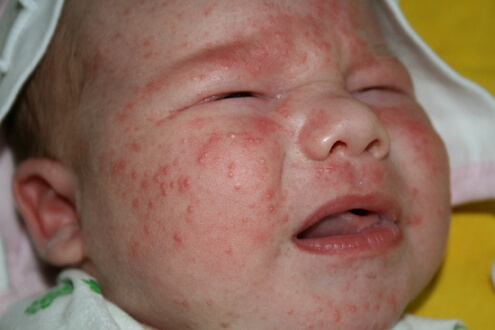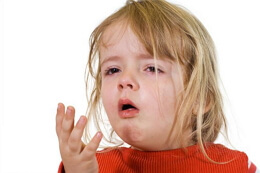Pollinosis
 Pollinosis( hay fever) is the most common disease of people of any age. Pollinosis - an allergic disease caused by pollen of plants, with primary damage to the eyes and mucous membranes of the respiratory tract. Pollen of almost all plants has a pronounced allergenic activity, so contact with it in highly sensitive people causes the development of this seasonal disease
Pollinosis( hay fever) is the most common disease of people of any age. Pollinosis - an allergic disease caused by pollen of plants, with primary damage to the eyes and mucous membranes of the respiratory tract. Pollen of almost all plants has a pronounced allergenic activity, so contact with it in highly sensitive people causes the development of this seasonal disease
Pollinosis - the causes of
Flowers, as it turned out, is not always fun. Nectar ambrosia only the ancient Greeks called the food of the gods, whereas all modern physicians consider this plant the most dangerous enemy of human health. For the first time, a description of the disease similar to pollinosis is found in the works of the ancient physician Galen, which survived to this day. A century after it, Van Helmont noted the seasonal nature of the development of asthma and linked it to the possible effects of pollen from plants. And only at the beginning of the 19th century( in 1819) the official communication of the English doctor John Bostock marked the beginning of a history of the disease called hay fever. And English physician Blakely, also suffering from this disease like Bostock, in 1873, exhaustively described the clinic pollinosis. If before the publication of his work it was considered to be the cause of the development of the disease, the fragrance of flowers, sunlight and dust, then Blakely presented irrefutable evidence that the development of pollen is due to pollen of plants.
The light on the mechanism of development of this pathology was shed just recently. The reason for the hay fever is not as previously said "hereditary predisposition" to pollen allergy, but directly hereditary disease. This was confirmed by genes that were found not so long ago, which transmit susceptibility to various allergens by inheritance. Usually they are inherited on the maternal line, although sometimes they can be passed on to the father. There were also works proving the relationship between a particular type of pollinosis and "defective genes."
From all the above it follows - once pollinosis is considered as a hereditary pathology, then preventive measures should be appropriate. The most important is to limit the contact of the baby with the pollen of allergenic herbs from the first stages of life. It was found that a child who was born during the flowering of trees and / or grasses, is more prone to the development of pollinosis, and in its more severe form. The greatest danger awaits the baby during the first six months from the time of birth and in the last three months of the intrauterine period. Hence the conclusion is that if at least one of the potential parents suffers from pollinosis( especially the mother), conception must necessarily be planned. This measure will significantly reduce the risk of development of pollinosis in the baby
Seasonal pollinosis
The most polluted seasonal pollen is represented by wind-pollinated plants that give a huge mass of small pollen penetrating the pores of the mucosa even through clothing. For example, in Russia, the main enemies of patients with pollen are such angiosperms as poplar, oak, birch, hazel, alder( blooms first).The period of their flowering: the middle of April - the second decade of May.
Such gymnosperms as cedar, pine, fir and spruce have pollen of much larger sizes and the allergy to it develops quite rarely. Despite this, Japanese cedar in Japan is one of the main causes of hay fever.
After the trees bloom, the flowering of grass grasses( reigrass, fescue, hedgehog, timothy grass, etc.) begins, which according to the chronology of flowering are enemies number 2.The danger of cereals is also the fact that some of them people eat: oats, wheat, rye. In this case, food is added to the pollen allergy, and no culinary treatment can help.
Since the end of June begins bloom Compositae, and the most hard-core for allergic grass from their list, is ragweed, which gives a colossal amount of pollen. Many zones of Russia and the CIS due to the huge spread of ambrosia can be called disaster zones. Annually, thousands of inhabitants develop bronchial asthma caused by ragweed pollen.
I want to focus on the fact that Composita often enter into the formulation of various medicinal fees, and our people are very fond of the treatment with phytopreparations. For the prevention of such a child's disease as scrofula( exudative diathesis), parents often bathe the baby in broth string or chamomile, while both these plants contain a huge amount of pollen. If the child has a chromosomal set of the above-described gene, the condition deteriorates sharply. The recorded cases of very severe reaction to chamomile enemas, washing with infusion of chamomile eyes, wormwood tea are described. Absolutely any natural honey can also present an increased danger, since it contains a huge amount of pollen.
Often, during the period of flowering of the Compositae, a cross reaction with some food products may occur, and the use of nuts and mustard for food is categorically prohibited. A certain threat is represented by peaches, apples and cherries. Not so simple and with the use of alcohol. Champagne to allergic people is not recommended to drink, but vermouth is strictly forbidden, since all its varieties contain wormwood, the reaction to which can be up to anaphylactic shock and Quincke's edema.
Some scientists believe that the danger is only the pollen itself, and if, for example, the apple is properly washed, then the person does not risk anything. This statement is erroneous, as the properties of pollen determine glycoproteins, and they are found in the fruits themselves. However, in this case, it will be food alimentary, but the patient will not become any easier
Pollinosis - symptoms of
Pollinosis manifests itself as a characteristic triad of symptoms: lacrimation( causes conjunctivitis), runny nose and bronchospasm. The most typical symptoms of pollinosis are severe itching in the nasal part of the pharynx and the nasal cavity, excruciating sneezing attacks with the discharge of an abundant liquid discharge from the nose, which replace seizures of complete nasal congestion. Then, auditory( Eustachian) tubes and mucous nasopharynx gradually become involved in the allergic process, which is manifested by increased sensitivity to visual and olfactory stimuli, hoarseness of voice and pain in the ears.
In some cases, the only symptom of pollinosis is pollen asthma( bronchospastic syndrome), which is observed in about 30% of patients with other manifestations of pollinosis. Pollen asthma is diagnosed as an isolated syndrome in 5% of patients. In this case, the clinical picture of pollen asthma is very similar to the symptoms of bronchial asthma. Sometimes swelling of the facial part( swelling of the Quincke) and hives can be observed.
During the period of exacerbation, the body temperature usually remains within normal limits, although sometimes it can be increased to 39 ℃, the patients have insomnia, weakness, sweating, headache.
Pollinosis in children is often unusual. In pre-school children, a so-called masked pollinosis is often observed, which is manifested by stuffing in the ears, which sometimes reaches a total loss of hearing, with other clinical signs of the disease completely absent. Pollinosis in other children can be manifested only by a slight reddening of the conjunctiva and frequent scratching of the nose( "allergic salute").In some babies, the disease proceeds as a severe bronchial asthma without a common cold
Development of pollinosis
Pollinosis develops according to a standard pattern: pollen penetrates the respiratory tract and settles on the mucous membranes of the respiratory tract and lungs. In addition, the pollen enters and then remains on the eyeball and the mucous membranes of the eye. Immediately after penetration into the body of pollen, the process of immune defense is started to recognize the allergen. After this happened, the mechanism of producing antibodies capable of suppressing the foreign agent is included. This process allergists call the process of sensitization. The inclination of the organism in the presence of predisposition in the child to allergic reactions can get its start at any age of the baby. To run a pollinosis, a minimal amount of pollen is sufficient.
The process of sensitization does not appear in any way. Often, after the first contact with the allergen before the appearance of clinical signs of an allergic disease, it may take several months.
For example, in case the contact of the child with ragweed pollen in the case of baby predisposition to the development of allergic reactions, the body immediately begins recognition processes in place of a foreign agent, in this case - ragweed pollen. After that, the immune defense produces antibodies that continue to remain in the body before contact with ragweed pollen next year. And now it is already the next year that the pollen will be presented in all its "beauty".This process in the development of allergic pollinosis is the final phase and is called the "resolution" process. That is why most parents often wonder why the pollinosis developed for no apparent reason, and moreover, for those allergens to which the child was previously completely unreceptive. In fact, throughout this time in the body baby proceeded process of sensitization, turning then allergy
Diagnostics
hay fever in case of the slightest suspicion of seasonal hay fever, to avoid possible diseases like adrift character( pneumonia, acute bronchitis, acute respiratory infections), should beTo address to the therapist or the doctor-allergist. Only a competent allergist-immunologist can put the correct diagnosis - pollinosis and prescribe an adequate treatment for the current condition. In case the sick person is a child, the initial stage of the survey will be a detailed survey of parents about how the baby developed and what diseases he suffered. After this, both in children and adults, the analysis of the contents of the nasal mucosa and the blood test are taken for laboratory testing.
The next diagnostic step is to determine which( for a particular person) pollen is an allergen. The optimal time for allergic tests is the winter season of the year - the absence of both the most irritating factor( pollen) and the specific drugs that enter the body. Due to this disease the picture will be the most reliable
Allergic sample
most often to determine the allergen provokes hay fever, allergists use tests prick or scratch test. These tests are conducted not earlier than two weeks after the receipt of antiallergic drugs was completed and necessarily in the winter.
Allergological tests are carried out as follows. On one of the forearms, a few minor scratches are made, on top of which drops of preparations with a high concentration of various allergens are then applied. Also, these allergens can be injected under the skin. After twenty minutes, on the basis of the size of each of the scratches physician visually determines the appropriate allergen( the higher the on-site application of the allergen red spot, the more a person on the allergen allergic reaction).
However, allergic tests are done for children who have already reached the age of five. For children who are younger, doctors recommend an alternative method of research - a specific study of blood on protein antibodies produced by the immune system in response to the influence of a certain type of pollen. Such a method of research can be carried out throughout the calendar year, without regard for the pharmacological preparations taken by the patient and his state of health. This is the only way to reveal the hay fever in young children. Hay fever is usually diagnosed during pregnancy the same way
hay fever - Treatment
Unfortunately modern science has changed the genotype of today are not able, however, to minimize the suffering it can.hay fever treatment based on numerous advertising "miracle" drugs must often does not bring results, as helping one person, other drugs only harm.
How to treat hay fever, can only recommend a qualified allergist. Most often, to suppress an allergic reaction, the patient is prescribed a course of antihistamines. To reduce the unpleasant sensations associated with the persistent runny nose, it has been shown to instill special vasoconstrictors in the nose.
How to cure an allergy completely? Unfortunately, for today it is unrealistic, however as much as possible to ease a symptomatology quite on forces. The main modern treatment for hay fever is a specific hyposensitivity. This method consists in subcutaneous administration of scanty doses of the allergen given( 2-3 injections per week, course of 40 injections).This procedure is carried out exclusively during the absence( in autumn or winter) of pollen in nature. As a result, the body develops resistance to the introduced type of allergen.
Pollinosis is a seasonal allergy, so it can literally be escaped by moving to the time of flowering quarantine plants, for example, to the mountains, or a place where your "allergenic plant" just does not grow. In the highlanders, the pollen is extremely rare. In case the trip is impossible, it is necessary to try to adhere to the following recommendations:
• Without extreme necessity( especially during the daytime hot season) try not to leave the premises. It should also be remembered that the maximum pollen concentration in the air is observed in windy weather
• During the flowering of allergenic plants,
country walks should be completely ruled out • Walking should only be in the evening, best in cloudy weather or after a rain
• OnWindow openings should always pull gauze or net and constantly moisturize them. Regularly and timely conduct wet cleaning. To reduce the likelihood of an allergic reaction to household chemicals or dust, you should use the gauze dressing
during cleaning. • In the patient's living room, soft toys and carpets should be removed, They always collect on themselves just a huge amount of dust
Prevention of pollinosis is including in a certain diet, which can greatly alleviate the condition. As such, the diet is quite simple, but its compliance will help to avoid severe allergic symptoms. The patient should exclude from his diet the following foods: chicken eggs, chicken meat( otoryochka especially), cherries, pears, honey and bee products, foods with food colors. It is also necessary to exclude drugs that contain plant components, as they can become a catalyst for an even more severe allergic reaction.
Allergy to
antibiotics. Antihistamines that relieve the symptoms of pollinosis deserve special attention, as there is a persistent belief that it is absolutelyHarmless. In this regard, the abuse of such drugs is simply enormous. People who suspect allergies, without account and due control, take such medicines as suprastin, pipolfen, tavegil, diphenhydramine, etc. Unfortunately, not everything is so simple and often allergic to antibiotics is observed simultaneously with pollinosis. To cancel a life-threatening drug, it must be identified as soon as possible.
In addition, categorically contraindicated taking antihistamines in bronchitis, bronchial asthma, difficulty breathing and attacks of wheezing. These drugs dry the pharyngeal mucosa, thicken and so thick sputum and as a result - clog the lumen of the bronchi and in the deep lungs contribute to the development of infection. In such cases, the reception of liquor-thinning medications of the opposite action is indicated.



